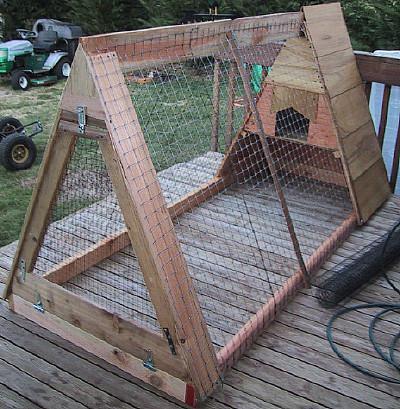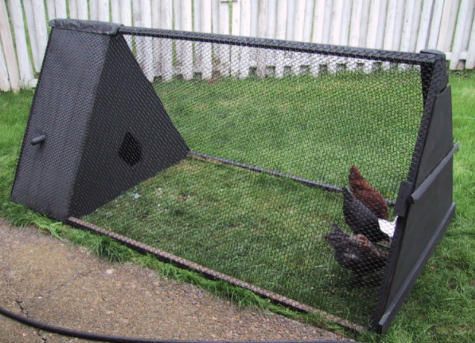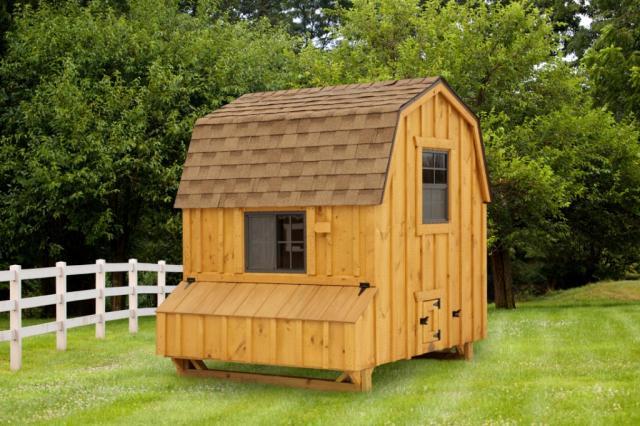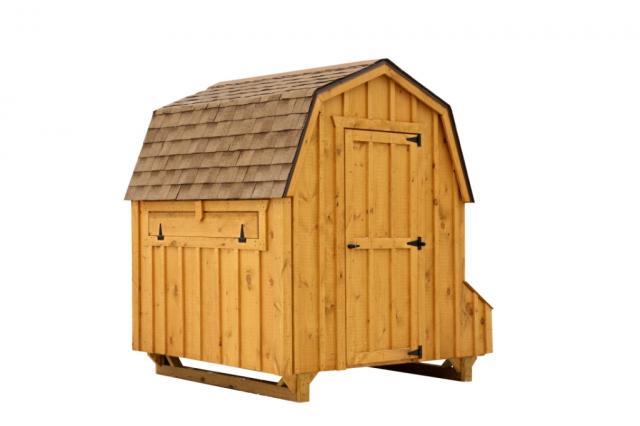Quote:
#1 - Looks like you don't have a lot of ventilation to let moisture out. Excess moisture will contribute to frostbit combs. It is very important to have ventilation up *high* so that the warmer, more moist air can escape...the vents should be high so that the chickens are down below and out of the way of any drafts.
#2a - As some one said...add some 4x4 posts (some 6" cedar poles would work great) under the area that is sagging....a hydraulic jack, blocks of wood or cement, the posts, and thoughtful planning would do the trick. Pay attention to what kyoko900 said about it being a load-bearing wall.
#2b - The leaking roof definitely needs to be taken care of. This is causing moisture in the coop and probably contributed to the frostbit comb. Looking from the outside it *looks like* the roof is still in fairly solid shape...just the roofing material (tin, shingles, ???) need some attention. It's leaking along a wall so I would be looking in that area and "uphill" from there for the problem...it might just take some roofing tar, a new/recycled piece of tin, etc.,. to repair it.
#3 - I might have covered that in #2b but... I'm not sure what I'm seeing "sagging" inside the coop. To me, the sagging area looks like some type of a vapor barrier(?), rather than the actual roof. Fix the leak in the roof and don't worry about the sagging "whatever" for now.
#4 - ??? It's too hard for your chickens to hop up and down...from your roost poles? Lower the roost poles down...just don't lower them lower than your nestboxes. The roost poles only have to be elevated a bit above the coop floor (but higher than the nestboxes).
What size is your coop? It's hard for me to tell from the picture exactly the setup. Is the coop under the shed roof on the left side? Is the door where it can be closed up securely? Does the door open into the area under the rest of the shed roof?
At the moment I would be would be bracing that leaning wall, patching the roof, lowering the roost poles, and getting some vents in the walls in the highest points. Doing that bit of work to it would be much less intensive than trying to build a completely new coop.
Best wishes,
Ed
#1 - Looks like you don't have a lot of ventilation to let moisture out. Excess moisture will contribute to frostbit combs. It is very important to have ventilation up *high* so that the warmer, more moist air can escape...the vents should be high so that the chickens are down below and out of the way of any drafts.
#2a - As some one said...add some 4x4 posts (some 6" cedar poles would work great) under the area that is sagging....a hydraulic jack, blocks of wood or cement, the posts, and thoughtful planning would do the trick. Pay attention to what kyoko900 said about it being a load-bearing wall.
#2b - The leaking roof definitely needs to be taken care of. This is causing moisture in the coop and probably contributed to the frostbit comb. Looking from the outside it *looks like* the roof is still in fairly solid shape...just the roofing material (tin, shingles, ???) need some attention. It's leaking along a wall so I would be looking in that area and "uphill" from there for the problem...it might just take some roofing tar, a new/recycled piece of tin, etc.,. to repair it.
#3 - I might have covered that in #2b but... I'm not sure what I'm seeing "sagging" inside the coop. To me, the sagging area looks like some type of a vapor barrier(?), rather than the actual roof. Fix the leak in the roof and don't worry about the sagging "whatever" for now.
#4 - ??? It's too hard for your chickens to hop up and down...from your roost poles? Lower the roost poles down...just don't lower them lower than your nestboxes. The roost poles only have to be elevated a bit above the coop floor (but higher than the nestboxes).
What size is your coop? It's hard for me to tell from the picture exactly the setup. Is the coop under the shed roof on the left side? Is the door where it can be closed up securely? Does the door open into the area under the rest of the shed roof?
At the moment I would be would be bracing that leaning wall, patching the roof, lowering the roost poles, and getting some vents in the walls in the highest points. Doing that bit of work to it would be much less intensive than trying to build a completely new coop.
Best wishes,
Ed







